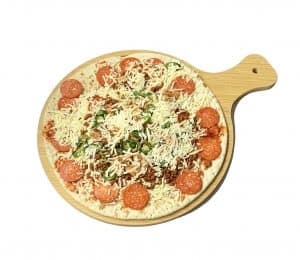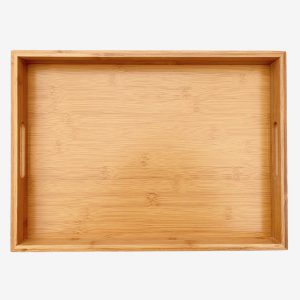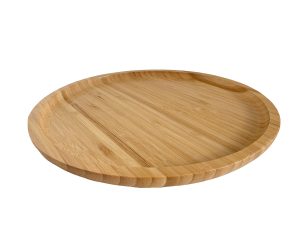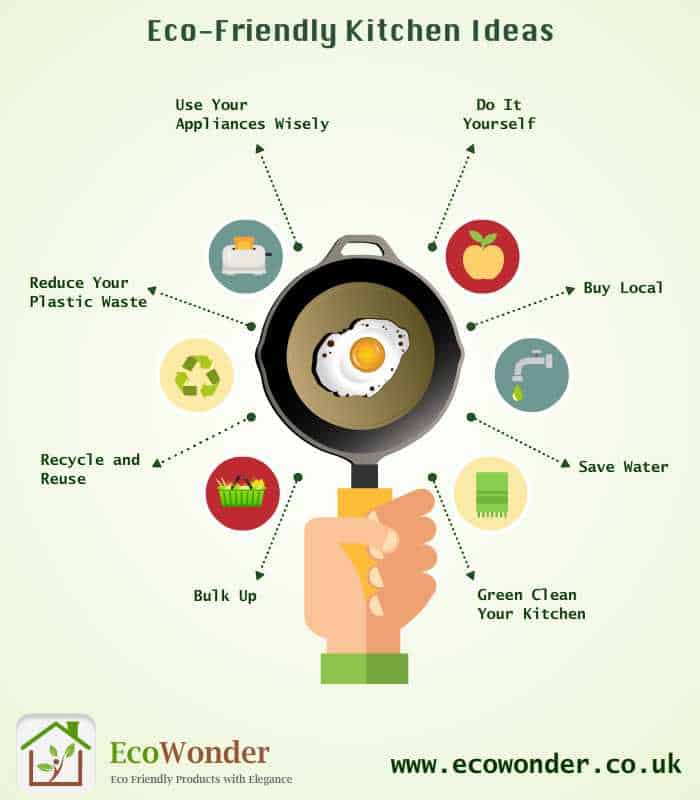The kitchen is a vital part of our family where we spend a lot of time, cooking, eating or cleaning, while it is often the most wasteful part of the home as well. From the food we cook to the detergent we clean with, there are so many opportunities to improve upon for a greener and eco-friendlier kitchen. The eco-friendly kitchen begins with eating green, but it doesn’t end there. Adopting an eco-friendly kitchen means you are making a conscious effort to prevent the exposure to toxic chemicals in food products. An eco-friendly lifestyle in the kitchen is not just for you, but also for your whole family. It can be a valuable teaching lesson for children to learn the importance of being a healthy eater and adopting a sustainable and eco-friendly mindset.
So, here are some tips for an eco-friendly kitchen:
1.Reduce Your Plastic Waste
Plastic waste is severely damaging our planet and is life-threating to thousands of wild animals of the ecosystem. Recently, the 5p charge of the single-use plastic shopping bags in the grocery store has made it simple to switch to grocery shopping “plastic bag-free” by using a reusable shopping tote or produce bag. Single-use plastics containers in the kitchen should be swapped out for longer lasting reusable alternatives. An easy alternative is to use glass, bamboo, wood, or cardboard containers to replace plastic. Not only will you move toward living eco-friendly, but you’ll also be avoiding any potential harm of being exposed to BPA and other plastic chemicals. If you still have the need for single-use items such as cutlery, plates, or cups for perhaps a party, look for biodegradable or compostable options.
2.Use Your Appliances Wisely
Keeping your kitchen appliances on standby wastes unnecessary energy. You can turn them off manually or get yourself a standby saver that automatically switches off all appliances when they are not in use. Energy-efficiency upgrades are coming fast to many new appliances. Energy ratings now run from A+++ to F, with A+++ using the least energy and F using the most. The better the rating, the more energy efficient and, therefore, the most cost effective. You also need to make the best use of the oven — cooking more than one thing at once, for instance. Reheating your food in a microwave can reduce cooking energy by as much as 80 percent instead of the oven.
3.Do It Yourself
Fresh meals containing vegetables, lean meats and whole grains are always highly nutritious and best for your health. Avoid purchasing pre-prepared, frozen foods, and make them yourself at your green kitchen. Although food manufactures constantly claim frozen meals can be reheated without any loss in taste or quality, thaw and rehydrate frozen and dehydrated foods itself is an energy cost activity. Cooking freshly let you know exactly what is going into your food and cuts out energy associated with processing food. If you have enough space in your garden, take it a step further and grow your own fruits, vegetables, using your composted kitchen waste as fertiliser.
4.Buy Local
Food miles have risen to the top of eco-friendly food discussions, and the fewer miles from farm to table, the better. Organic melon from Malaysia might taste good in the frozen winter, but consider the pollution caused by flying them to wherever you are. In addition, all the preservatives and biocides used to preserve the food will cast additional burden to the environment. Whenever possible, we recommend try to purchase food products that are created locally. You’ll not only support your local community, but also will sustain some of the nutrients which might be lost in the process of being picked and shipped thousands of miles. You will also reduce your carbon footprint because of the reduced cost of transporting the products. When you shop at local butchers, bakers, farm shops and green grocers, your spending will also boost the local economy and you might build some personal relationships with local entrepreneurs.
5.Save Water
Water is becoming a precious resource, and we need to stop taking it for granted especially in the kitchen. An efficient dishwasher, for instance, can use a lot less water than washing the dishes by hand in the sink. For maximum water efficiency only turn on your dishwasher when it’s full. The key to water efficiency is to avoid leaving your tap running. Washing your produce under running water is wasteful and unnecessary. Fill up a bowl of water and wash them that way instead. Another way to save water when washing up is to wash or wipe dishes as soon as you can, that way the food doesn’t harden and less water is needed to get them sparkling clean.
6.Green Clean Your Kitchen
Cleaning products can considerably impact our carbon footprint. Regular petrochemical dishwashing liquids, detergents and other household cleaning products contain all kinds of chemicals, which may be potentially hazardous and after entering our waterways will adversely affect marine life. Alternatively, you can switch to eco-friendly products instead or consider making your own from no-impact kitchen staples, such as vinegar and baking soda, which combine to make a great all-purpose, non-toxic cleaner. Do It Yourself is the most cost-effective way of cleaning your kitchen in a safe and eco-friendly way.
7.Bulk Up
There are plenty of environmental and financial reasons to buy in bulk. Purchasing Buying in bulk usually means less packaging, and fewer trips to the store, and can also mean financial savings. You will travel less for your bulk shopping trips, and this will contribute to improve the environment by reducing CO2 emissions. Buying larger packages help to save on packaging waste, since individually packaged products use more plastic, which is harmful for the environment and the food chain. Bulk cooking is a more efficient use of appliance energy and your time, so cook up a nice big pot of soup and anticipate saving (and eating) lots of leftovers. Just make sure you can consume what you purchase and produce.
8.Recycle and Reuse
Paper, plastic and aluminium are all frequently used in the kitchen, and these items are accepted in most local recycle programs, making them rather easy to recycle. What you may not realize, however, is that your kitchen is probably filled with other recyclable items. Most cookware is made from nonferrous metal (aluminium, copper and stainless steel) and can be recycled at a general scrap metal recycler. Cork is an incredibly sustainable material. It’s made from tree bark, which doesn’t harm the tree when removed. If you love DIY projects, there are numerous cork recycling projects. You can create a dedicated recycling area in the kitchen with a range of stylish bins for different types of kitchen waste.






